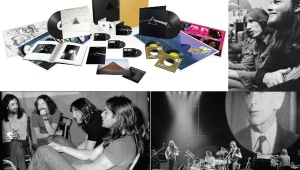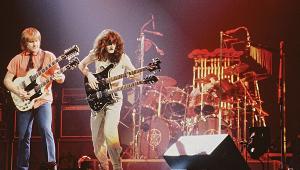Moving Pictures: Rush's 1981 Masterpiece Gets its Due in Atmos Page 2
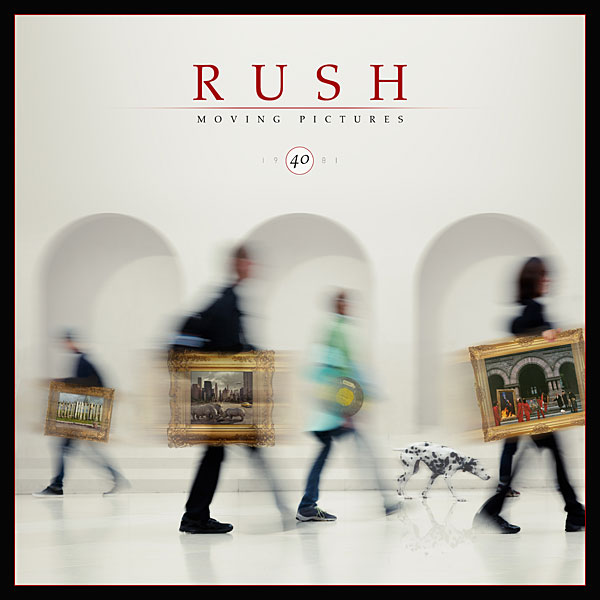
Indeed, the 40th anniversary vinyl is my own personal favorite version of Moving Pictures on wax to date — and it's finally sporting a colorfully sprawling gatefold to boot. My original, fully worn-out 1981 Anthem/Mercury LP is forever shelfbound at this point, long supplanted by the 2015 Anthem/Mercury/UMe DMM 180-gram LP remastered by Sean Magee at Abbey Road Mastering Studios that became my preferred turntable spin — until now, that is. Drop the needle on the 2022 180g vinyl, and, among other things, you'll readily feel the full effect of the panoramic performances and perceptive production on “Tom Sawyer” and “The Camera Eye,” the two tracks that retain their respective titles of being a perfect pair of album-side openers.
Catch The Spirit
That being said, I am beyond enamored with the 24/48 Dolby Atmos mix included on the box set's Blu-ray, especially considering surround maestro Chycki worked with the absolute best materials. “I got two sets of files for each reel — the master and slave,” he says. “I had a couple of analog machines slaved, then it was all transferred into Pro Tools. Once I had everything resolved and put together, I started 'spreading out' the band. As you know, this is a record that's incredibly deep, with a combination of radio songs on Side I, and songs that were a lot more self-indulgent on Side II.”
Chycki gives much-deserved credit to Brown and Northfield for their exemplary efforts behind the board. “Every time I put the stereo mix of Moving Pictures on before I got down to do my work, I would put the faders way up,” Chycki recounts. “It's a joy to listen to that mix because I know the band's work so intimately. It's so satisfying to listen to the band play, and feel the connection they have. Terry and Paul did such a stellar job in capturing the band's ability, because they're always on point when they play in the studio.”
Thanks to the breadth of the album's core material, the Atmos mix is light years ahead of the PCM 5.1 and DTS-HD Master Audio 5.1 mixes Chycki did a decade earlier for the 30th anniversary Moving Pictures package released as separate CD/BD and CD/DVD Deluxe Editions in 2011. “We have the added axis of true height, and there are now so many more options for where to place audio,” he explains. “So many things come out that were in the mix originally — elements now unmasked that we used to have to try to decipher coming at us from only two speakers. The placement is incredibly accurate going from front to back, and in the upper space as well. Overall, the listener is going to get an increased sense of engagement when listening to Moving Pictures in Atmos.”
In Their Limitless Rise
Rush also began experimenting with their gear choices in Le Studio, which led to some aurally apparent differences in the original Moving Pictures stereo mixes. “Undoubtedly, the feel and sound of a particular instrument can influence the way one plays,” Brown agrees. “In this case, Ged's newly acquired [1972] Fender Jazz bass was an inspiration for him — although the Ricky [i.e., his Rickenbacker 4100] was the bass of choice for 'Red Barchetta,' and the Steinberger was the right sound for 'YYZ.' I don't think any of these tunes would have evolved differently using different gear choices, but it's the subtleties that count.”
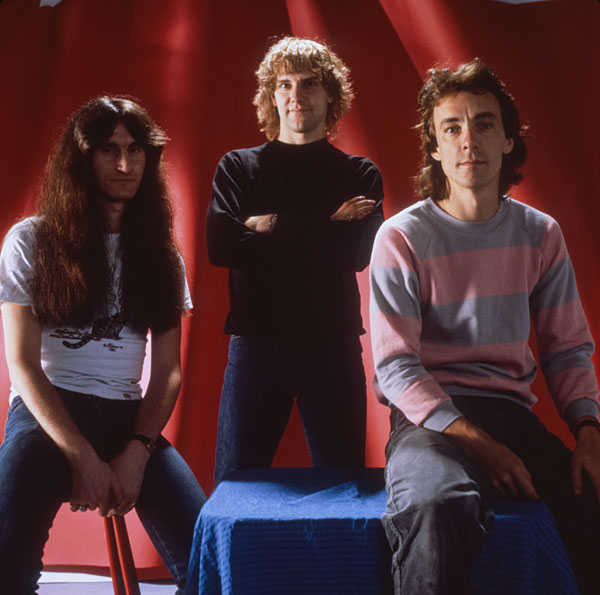
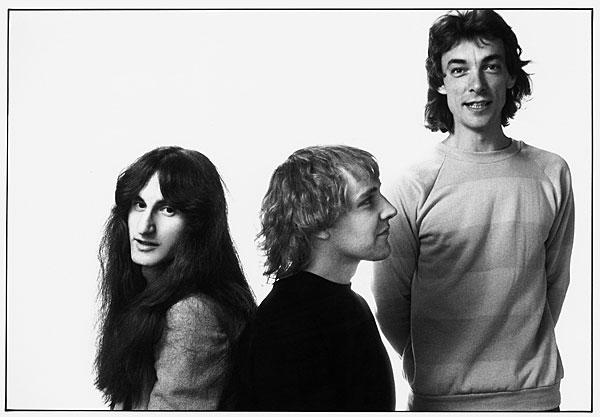
Taken track by track, Moving Pictures is a comprehensive work of art. How impactful Track 1, “Tom Sawyer,” ultimately became wasn't even an inkling in anyone's heads at that point, but “from the moment I first heard it, I knew it would make some waves,” Brown allows. “Neil's drum fills still put a smile on my face. Ged's Moog sounds fresh, and it's the perfect setup for Alex's well-crafted solo. Along with the input of Pye [Dubois, Peart's co-lyricist on the track] and Ged's vocal, it set a benchmark for us.”
In its Atmos form, “Tom Sawyer” is more about the overall dynamic power of the band itself as an interlocking, unified performance unit rather than serving as a “show off” kind of mix — but it also laid down the gauntlet for just how good the format really is. “That was the first Rush track I had mixed in Atmos,” Chycki reports, “and it doesn't have what I'd call the more 'obtuse placements' in it.” After “Tom Sawyer” was duly Atmos'ed, Chycki solicited Alex Lifeson's real-time reactions. “Al came to my studio to preview it,” the producer continues. “He listened to 'Tom Sawyer' in the sweet spot while I was standing there, outside the zone. When the song finishes, he's dead still — completely quiet. In my head, I start going, 'Wow, I hope he likes it!' Finally, he turns to me after about 10 seconds and goes, 'This is the first time I've ever heard this song like what I hear in my head.' To hear that directly from an artist who played the song hundreds, if not thousands, of times — for him to have that feeling is very satisfying, and it really speaks to the power of the Atmos format. When the artists themselves are going, 'Yeah, it's pretty immersive' — to be able to evoke that strong of an emotional impact in them — that's when you know you're onto something.”
Next out of the gate is the multi-generational dreamscape that is Track 2, “Red Barchetta,” which chronicles the twists and turns of a high-stakes backroads car race. “I think the key to the way it sounds is how the overall arrangement builds from the arpeggiated harmonics and dynamic bass lines to the frenzied guitar solo,” Brown theorizes, “but undoubtedly Neil's drum chart provides the drive and forward motion throughout until the Red Barchetta is parked back in the barn.”
Track 3, “YYZ” — the album's lone instrumental that, as every native Canadian will rightfully point out, is in fact pronounced “Y-Y-Zed” — got its title from the airport identification code for Toronto's Pearson International Airport. “YYZ” also showcases the unbridled musicianship of all three bandmembers, each of whom gets featured breaks at various points throughout the song. Speaking of breaks, the “whipcrack” sound effect (as I'm calling it) heard scattering across the “YYZ” soundfield — left to right (and back again) in stereo, fully off to the sides in 5.1, and higher and wider up into the ether in Atmos — was actually born of something you might not realize, beyond the breaking glass effect. “The whipcrack was created by snapping two 3-inch pieces of wood together — being very careful to not pinch one's fingers,” Brown chuckles, “and then by adding some delay and copious amounts of reverb! It's a really well-written piece, and it's definitive of where the band was at in terms of their playing chops. It was very exciting to capture those magic moments in this tune.”

